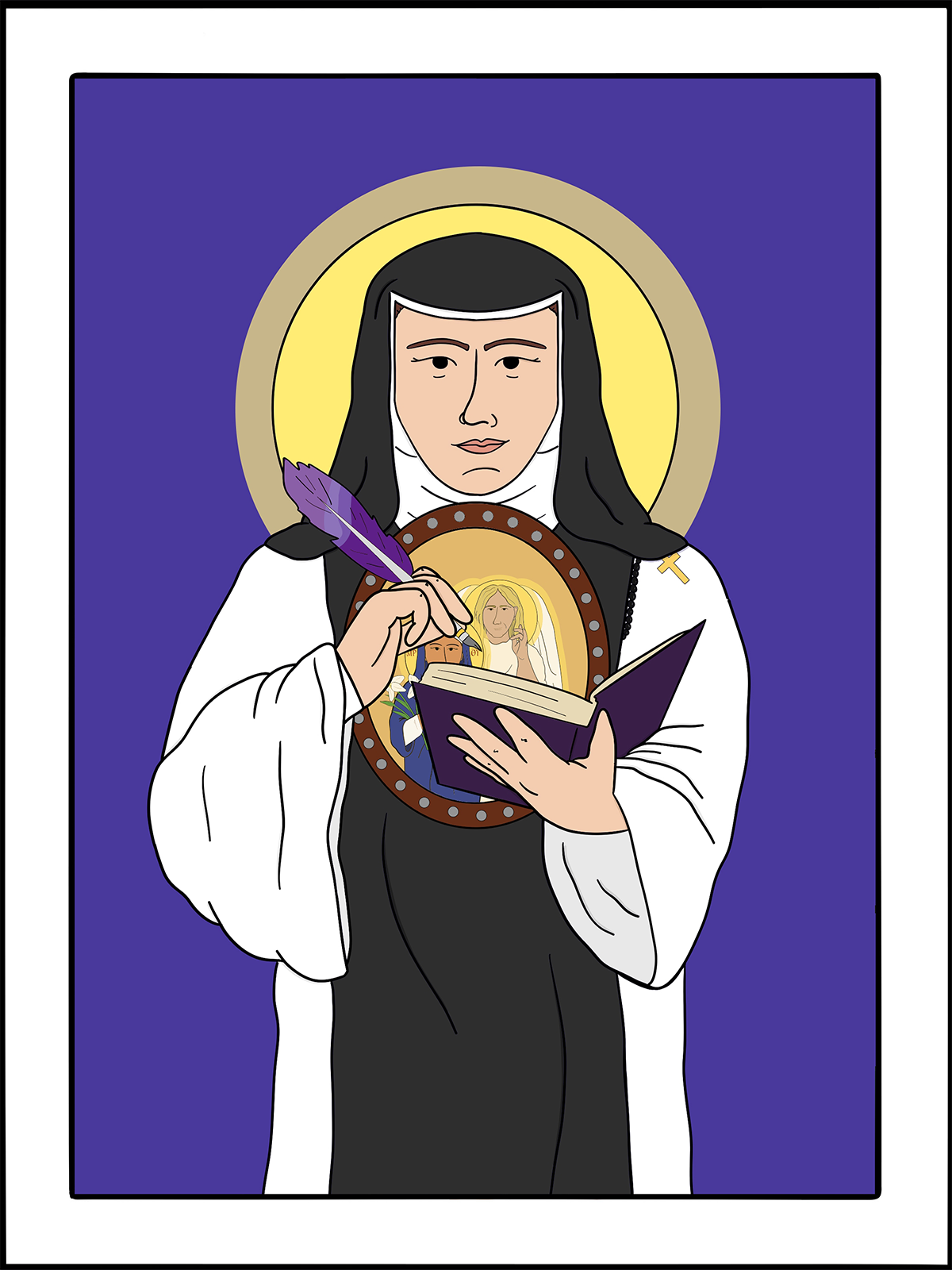
April 18
Juana Inés de la Cruz
Monastic and Theologian, 1695
art by Rev. Kirsten Kohr of Uhrichsville, Ohio Almighty God, Source of all knowledge, we give you thanks for the witness of your servant Juana Inés de la Cruz in her fierce passion for learning and creativity. Teach us to be faithful stewards of our minds and hearts, so that, following her example, we might forever proclaim the riches of your unending love in Jesus Christ our Lord. Through Jesus Christ who, with you and the Holy Spirit, lives and reigns, one God, for ever and ever. Amen.
Juana Inés de Asbaje y Ramirez de Santillana was born the illegitimate daughter of a Spanish captain and a Creole woman on November 12, 1648, in the town of San Miguel Nepantla near Mexico City, Mexico.
Raised by her grandparents in Amecameca, Juana Inés established herself from a young age as a talented thinker and writer. She is reported to have learned to read and write by the age of three, to do accounting by the age of five, to compose religious poetry by the age of eight, to teach Latin to children by age thirteen, and to master Greek logic by adolescence.
Prevented from university studies in Mexico City because she was a woman, Juana Inés continued to study privately while serving as a lady-in-waiting to the Vicereine Leonor Carreto, who also served as Juana Inés’ tutor, confidant, and friend. By the time she was seventeen, Juana Inés was able to sit before a tribunal of theologians, philosophers, justices, and poets to defend her knowledge and skill, thus expanding her renown as a scholar and a poet.
Juana Inés spent a short time in 1667 living in a cloistered monastery of Carmelite nuns but found the community’s discipline too severe to allow her academic and creative genius room to grow. In 1669 Juana Inés entered the monastery of the Order of Saint Jerome, a more relaxed community, and took the religious name Sor Juana Inés de la Cruz (Sister Joan Agnes of the Cross in English).
Sor Juana Inés’ literary career blossomed in the monastery, which drew both the affirmation and ire of ecclesiastical and secular society. Her detractors insisted that a nun had no business writing about secular studies such as philosophy or natural science, while her admirers praised her concise theories and elegant prose. In the midst of a very public intellectual career, Sor Juana Inés managed to balance religious devotion and life in community. She is claimed to have said: “One can perfectly well philosophize while cooking supper.”
Giving in to threats of official ecclesiastical censure, Sor Juana Inés stopped publishing her writing by 1693. Following her retirement from public intellectual life, Sor Juana Inés is reported to have sold her collection of musical and scientific instruments, as well as her library of more than 4,000 books. Of her extensive correspondence and publications, only a few of her writings have survived but she is hailed by contemporary critics as a major figure in indigenous Mexican literature.
Sor Juana Inés de la Cruz died on April 17, 1695, while serving her religious community during an outbreak of the plague.
Excerpted directly from “Lesser Feasts and Fasts 2022,” p. 196-197.
Lessons and Psalm Judith 16:1-10
Psalm 34:11-18
Matthew 5:17-20

